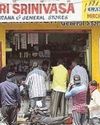
Free flow of foreign investment (direct and portfolio) has been a major plank of globalisation and liberalisation. FDI is a key economic constituent, accounting for 40 per cent of incoming resources and 10 per cent of capital formation in developing countries — and can go up to 50 per cent in some economies. Recent trends, however, show that not all is well on the FDI front. As per UNCTAD, global FDI inflows reached a peak of $2 trillion in 2007 but bottomed out after the 2008 global financial crisis; they were expected to recover to $1.6-2 trillion by 2012. The reality, however, is that global FDI could only reach to $1.1 trillion in 2018. Looking back, the rise of FDI inflows from $225 million in the early 1990s to $1.5 trillion in 2000 was impressive, but the pace has now ebbed.
Other sources for external capital too are seeing a slowdown. Net debt and equity flows to the low and middle-income countries have fallen from $1.27 trillion in 2017 to $1.03 trillion in 2018, with a sharper fall noticed in long-term debt, that fell from $404 billion to $303 billion; private creditors from $352 billion to $225 billion; and net equity flows from $540 billion to $503 billion; with only remittances holding fort at about $481 billion. The growing spat between the US and China might be a cause of the reversal, but the outcome is a major concern for the developing world.
Recent figures
This story is from the {{IssueName}} edition of {{MagazineName}}.
Start your 7-day Magzter GOLD free trial to access thousands of curated premium stories, and 9,000+ magazines and newspapers.
Already a subscriber ? Sign In
This story is from the {{IssueName}} edition of {{MagazineName}}.
Start your 7-day Magzter GOLD free trial to access thousands of curated premium stories, and 9,000+ magazines and newspapers.
Already a subscriber? Sign In

Covid Presents An Opportunity For India
India must attract investors exiting China post-Covid. Streamlining of project clearances and relaxation in FRBM norms will help

Did Alternative Assets Shield You From Covid-19 Volatility?
The assets closely linked to stock and debt markets could not stave off the losses

How To Put Aircraft To Bed
Preserving grounded planes, to get them up and flying at short notice, is a challenging task. Ashwini Phadnis captures the process

There Can Be No Going Back On WFH
Covid-19 has fast-forwarded the shift to ‘work from home’. However, some face-to-face connect will always be needed

UN, WHO Urged To Ensure ‘Benefit Sharing' Of Covid-Related Data
Biopharma firms should reach vaccines, medicines to poor nations at an affordable price, say civil society bodies

With No Clear Signal From Rlys, States Explore Ways To Bring Back Migrants
Quarantine centres, cross-country buses being arranged even as migrants hop on to boats, trucks and ambulances

Centre Allows All Neighbourhood Shops To Open But With Riders
Final call will be taken by local authorities; shopping complexes that draw fewer ‘outsiders’ are permitted to operate

Covid Impact Relatively Muted In India
Compared to Italy and the US, India’s rate of infection spread has been slow. This can be attributed to the strict measures in place

How Global Trade Will Fare Post-Covid
China isn’t likely to lose its pre-eminent position soon. India, for one, will need to make manufacturing globally competitive

How To Curb Harassment In The Virtual Office
Training and sensitisation are essential. Institute a strict dress code and chat etiquette to ensure professionalism during video calls